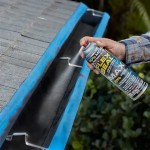How To Install Basement Egress Windows: A Comprehensive Guide
Basement egress windows are crucial for safety and can significantly enhance the usability and value of a basement. These windows provide a secondary exit in case of emergency, fulfilling building code requirements for habitable basements, and also allow for natural light and ventilation. However, installing egress windows is a complex project that typically requires careful planning, adherence to local regulations, and a good understanding of construction techniques. This article provides a detailed overview of the process.
Prior to undertaking this project, understanding the relevant building codes is paramount. Egress window requirements vary depending on the jurisdiction, but generally specify minimum opening sizes, sill heights, and operational characteristics. Failure to comply with these codes can result in fines, the necessity for rework, and potentially compromise the safety of the building occupants. Consulting with a local building inspector or a qualified contractor is highly recommended to ensure compliance with all applicable regulations.
Planning and Preparation
The first step involves meticulously planning the project. This includes determining the desired location for the egress window, assessing the existing foundation, and obtaining the necessary permits. The location should be chosen based on accessibility, natural light, and the ease with which a window well can be installed outside. Consider the landscaping and proximity to potential obstacles, such as utility lines or trees.
A thorough inspection of the foundation wall is essential. The wall must be structurally sound and free from cracks or other damage. Any existing issues need to be addressed before proceeding with the window installation. Depending on the age and condition of the foundation, it may also be necessary to consult with a structural engineer to ensure that cutting an opening for the window will not compromise the building's structural integrity. Acquiring the appropriate permits from the local building department is a mandatory step. This typically involves submitting detailed plans and specifications for the project. It is important to factor in the permit processing time into the overall project timeline.
Materials and equipment should be gathered before starting the actual installation. This includes the egress window itself, which should meet the required size and operational specifications outlined in the building codes. In addition, the window well, drainage system, window flashing, concrete saw or jackhammer, safety gear, and various hand tools will be needed. Ensure all equipment is in good working order and that you are familiar with their proper operation.
Safety is paramount throughout the entire installation process. Wear appropriate personal protective equipment (PPE), including safety glasses, gloves, and a dust mask or respirator. When using power tools, such as a concrete saw or jackhammer, take extra precautions to avoid injury. Be aware of potential hazards, such as underground utilities, and take steps to mitigate the risks.
Cutting the Opening
Cutting the opening for the egress window is a critical step that requires precision and care. Accuracy in this step is vital, because a misaligned or poorly cut opening can create problems with window fit, weather sealing, and structural integrity. Begin by marking the outline of the window opening on the interior foundation wall. Use a level and square to ensure the lines are straight and accurate. Double check the measurements against the window manufacturer's specifications.
The process of cutting through the foundation will depend on the material and thickness of the wall. For concrete foundations, a concrete saw is typically used to make precise cuts. Alternatively, a jackhammer can be employed, but this method requires more skill to avoid damaging the surrounding concrete. If using a concrete saw, score the outline of the opening on both the interior and exterior sides of the wall. This will help prevent chipping and cracking of the concrete. Make a series of overlapping cuts to gradually deepen the opening. For thicker walls, it may be necessary to cut from both sides.
Once the opening is cut, carefully remove the concrete block. This may require the use of a sledgehammer and chisel. Exercise caution to avoid damaging the surrounding wall. Clean up any debris and dust from the opening. Inspect the edges of the opening for any cracks or imperfections. Repair any damage using concrete patching compound.
It's often best practice to create a concrete header if the opening is wider than a certain dimension (usually dictated by local code and structural considerations). The header serves to redistribute the structural load above the window opening. A lintel or steel beam is placed above the opening and the concrete is poured around it, creating a strong support. Consult with a structural engineer to determine the appropriate header size and design for the specific situation.
Installing the Egress Window and Window Well
Before installing the egress window, prepare the opening by applying flashing around the perimeter. Flashing helps to prevent water from seeping into the foundation wall. Use a high-quality, self-adhesive flashing and follow the manufacturer's instructions carefully. Ensure that the flashing is properly lapped to shed water away from the window opening.
Carefully insert the egress window into the prepared opening. Ensure the window is level and plumb. Use shims to adjust the position of the window as needed. Once the window is properly aligned, secure it to the foundation wall using appropriate fasteners. Follow the window manufacturer's recommendations for fastener type and spacing. Fill any gaps between the window frame and the foundation wall with expanding foam insulation. This will help to seal the window and prevent air and water leaks. Trim any excess foam insulation after it has cured.
The installation of the window well is equally important. The window well provides an escape route from the basement and prevents soil from collapsing against the window. The specific type of window well will depend on the depth of the excavation and the soil conditions. Common types include corrugated metal, plastic, and concrete window wells. Excavate the area outside the window to the required depth and width for the window well. Compact the soil at the bottom of the excavation to provide a stable base for the window well.
Install the window well according to the manufacturer's instructions. Secure the window well to the foundation wall using appropriate fasteners. Backfill around the window well with gravel or crushed stone. Ensure that the backfill is properly compacted to prevent settling. A drainage system is essential to prevent water from accumulating in the window well. This typically involves installing a perforated drain pipe at the bottom of the window well, which is connected to a sump pump or a drainage system. Cover the drain pipe with gravel to prevent it from clogging. The drainage system ensures that water is efficiently directed away from the foundation.
Finishing Touches and Inspection
Once the egress window and window well are installed, complete the finishing touches to ensure a professional and watertight installation. Caulk around the perimeter of the window where it meets the foundation wall. Use a high-quality, exterior-grade caulk that is designed for use on masonry. Apply the caulk in a smooth, even bead and tool it for a neat appearance. This will create a watertight seal and prevent water from entering the basement.
Install any necessary trim around the interior of the window to conceal the rough edges of the opening. Use paintable or stainable trim to match the existing interior décor. Secure the trim to the wall using nails or screws. Fill any nail holes with wood filler and sand smooth. Paint or stain the trim to match the surrounding surfaces. Proper insulation is critical for energy efficiency and comfort. Insulate around the window frame to prevent air drafts and heat loss. Use fiberglass insulation, mineral wool, or spray foam insulation to fill the cavities around the window. Ensure that the insulation is properly installed and sealed to prevent air infiltration.
The final step involves scheduling an inspection with the local building department. The inspector will verify that the egress window installation meets all applicable building codes and regulations. Be prepared to provide documentation, such as permits, plans, and product information. If the inspection is successful, the building department will issue a certificate of occupancy or completion. This document confirms that the work has been completed in accordance with the code and that the basement is safe for occupancy.
Key Considerations for Success
Several key considerations are essential for a successful egress window installation. First, obtain all necessary permits before starting the project. Failure to do so can result in fines, delays, and the need for rework. Consult with a local building inspector to ensure that the project complies with all applicable codes and regulations.
Second, ensure that the foundation wall is structurally sound. Before cutting an opening in the wall, inspect it for cracks and other damage. Consult with a structural engineer if there are any concerns about the integrity of the foundation. Proper drainage is essential to prevent water from accumulating in the window well. Install a drainage system that efficiently directs water away from the foundation.
Third, carefully follow the manufacturer's instructions for installing the egress window and window well. Use appropriate fasteners and sealants to ensure a watertight and durable installation. Pay attention to details, such as flashing, caulking, and insulation. A well-executed egress window installation improves the safety, usability, and value of a basement. By meticulously planning the project, adhering to local regulations, and employing proper construction techniques, property owners can successfully install egress windows and ensure the safety and well-being of their families, while additionally enhancing the property value and its appeal.

How To Install A Basement Egress Window Acculevel

How To Install Egress Windows Bring Light Into The Basement Bliffert Lumber And Hardware

Installing An Egress Window In Our Luxurious Basement Dwelling Bright Green Door

Pros And Cons Of Egress Windows News Events For Thrasher Foundation Repair

Basement Egress Window Cost And Installing An

How To Install An Egress Window Youtube

How To Install A Terraced Window Well In Your Basement Diy

Smart Moves To Keep Your Basement Dry Tips And Tricks

Install A Basement Window Diy Or Hire Pro Modernize

How To Install An Egress Window With S Wikihow







